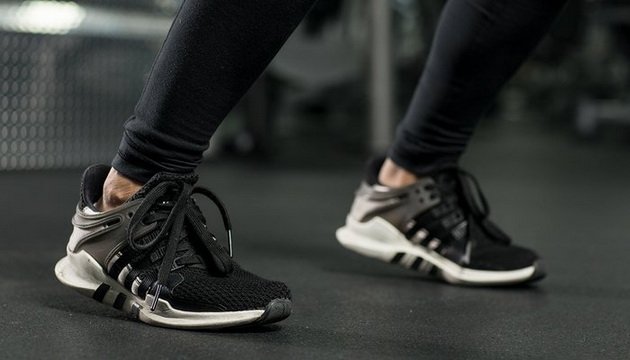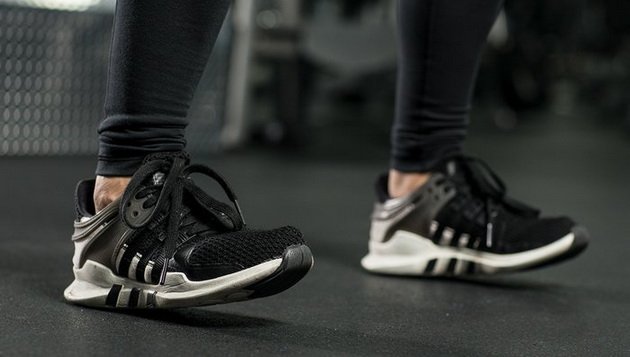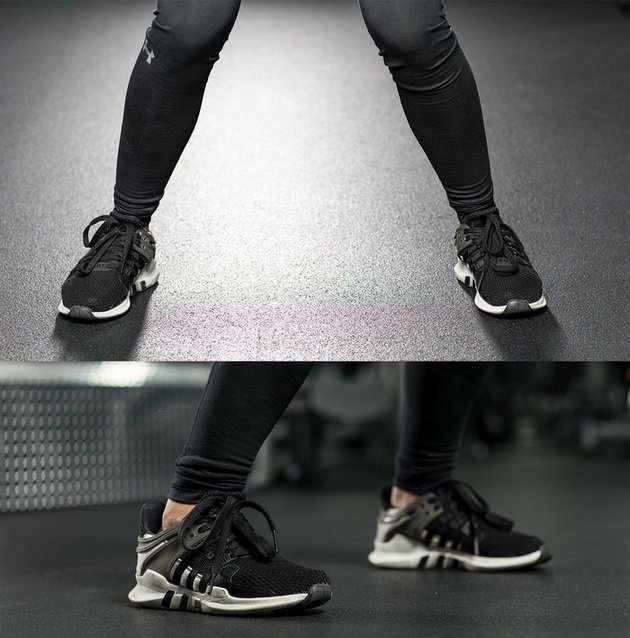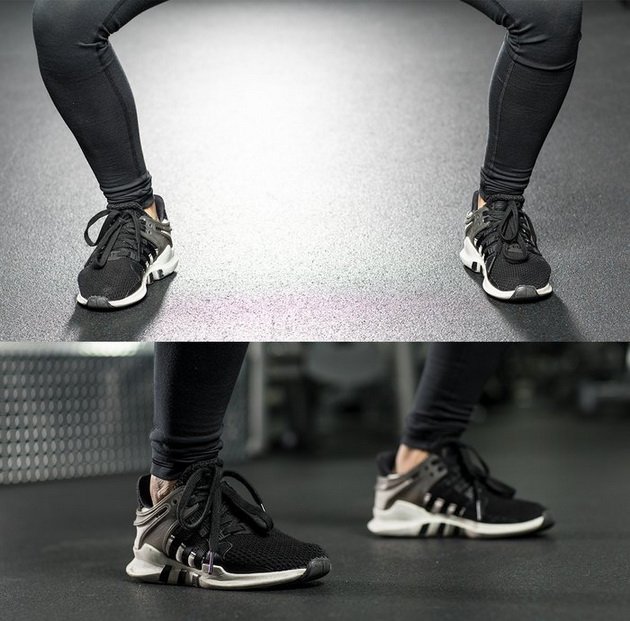
Squat Technique
You may feel uncomfortable when someone walks around the gym barefoot, but barefoot squats can be your key to perfect exercise technique.
Although the foot is the part of the body that allows many movements to be performed, it does not receive the respect it deserves – especially in the gym. Athletes’ feet can be affected by fungus, smell unpleasant, and sometimes they are just downright ugly. But when you need to make sure your squatting technique is correct, bare feet can play a key role.
To the trained eye, foot movements provide a wealth of information about squatting technique. Correct foot position reduces stress on the knees, straightens the hip joints and protects the spine from injury. Conversely, poor foot-to-floor contact alters the trajectory of the barbell movement, lowers the 1RM, and increases the risk of atraumatic injuries in weightlifters.
It is difficult to keep track of your feet while performing a squat. Instead, have a friend videotape your actions or crouch under the watchful eye of a motion biomechanics professional. Start squatting with a bare bar. If there are no obvious mistakes, increase the weight and see if they show themselves. Do not hang pancakes on the bar endlessly, just to provoke mistakes; you may be one of those lucky ones who don’t! To be sure of this, check to see if one of these four things happens to you while squatting.
Mistake 1. Are the heels off the floor?
Losing your heels off the floor during squats is an indicator that your body – and with it the barbell – is moving forward. In squats, you should be as stable as possible, and when your heels rise off the floor, your stability instantly disappears. Ideally, the bar should be supported by the entire foot and walk in line with the hip and ankle joints. When the center of gravity moves forward with respect to this downward vertical, the risk of injury to the knees, hips, and lower back increases at the speed of light. And to be clear, pain during strength training is not “part of the weightlifting trade.” It is an unmistakable indicator of poor movement technique.

A quick way to correct a mistake is the tripod technique, in which you create three points of contact between the foot and the ground: the heel, the inner and outer pads of the arch of the foot.
Spread your fingers and glue to the floor with these three points to create a solid foundation from which you can confidently push off. If you cannot constantly maintain unbreakable contact of the foot with the surface, you risk becoming a victim:
- Pain in the medial meniscus (inside of the knee).
- Hip impingement syndrome (pain in the groin and on the front of the thigh).
- Pain in the lumbar spine.
These issues are constantly discussed on the forums of powerlifters by athletes who do not understand the origin of this pain. While many athletes do not consider these to be “injuries,” since there is no injury as such, it is about it. Injuries are not caused by acute trauma, but by systematic squats with poor technique. They can be easily prevented and can usually be successfully treated by making proper contact between the foot and the floor.
Mistake 2. Are the toes lifted?
When the toes come off the surface, we are faced with the opposite problem. If your toes are not on the ground, you are transferring the entire weight of the barbell to your heels. This leads to an overload of the posterior muscle chain.

That’s right: you can overtrain your posterior muscle chain by overworking it day in and day out – especially if you frequently do the following exercises:
- Classic squat (load on the heels prevails).
- Romanian deadlift (heel load prevails).
- Reverse hyperextension.
- Glute bridge with a barbell.
- Exercise Superman.
To correct the forefoot tearing error, use the tripod technique described above and perform towel curls to strengthen the muscles of the foot.
Mistake 3. Are the arches of the foot flattened?
The flattening of the arches allows the knees to buckle inward. Dangerous knee position is the result of improper function or position of the joints above and below the knee. In this case, the culprit is the foot-ankle complex. There are two ways to test an athlete for flattening of the arches:
- Look at the outer edge of the foot. Does he lose contact with the floor?
- Look at the inner edge of the foot. Does the height of the vault decrease in any way?

Try it now: sit and rest on the floor with three points of your foot. Simulate tipping the knees inward and see if you feel the pressure on the ground contact points of the foot has changed. If so, try the following adjustments:
- Make sure the contact is on all three points.
- Spread your toes as wide as possible and grab them into the floor.
- Press your foot into the floor with even more force.
By correcting the error with the flattening of the foot, you will find a cure for the following problems:
- Failure of the knees inward.
- Internal rotation of the thigh.
- Squats with the prevalence of leg muscles.
Mistake 4. Are you lifting the arches of your feet?
The three mistakes we have considered are the result of a lack of attention during the execution of the movement. Raising the arches, on the other hand, is a deliberate overcorrection, and it is an acquired skill. When squatting, weightlifters often receive advice from their trainer to “push the knees out” to prevent them from dropping inward. The trainer has good intentions, but as a result, a movement pattern can form that interferes with the correct position of the knee joints.

The good news is that, like other mistakes, this one can be corrected by using the tripod technique. By eliminating any of these problems with the tripod technique, you will create a solid foundation for your whole body from which you can lift weights much more efficiently and without unnecessary risk.
